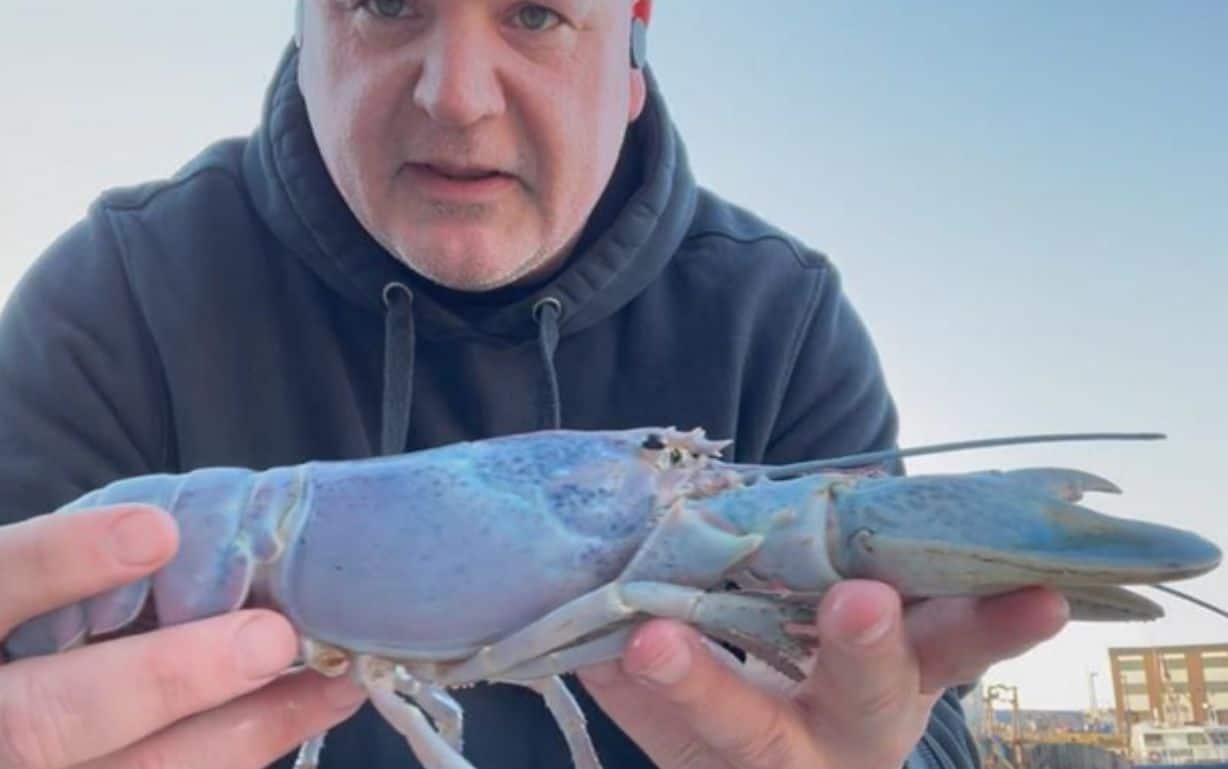Rare ‘Cotton Candy’ Lobster: 1-in-100M Catch, Saved from dinner plate, Returns to Ocean

The special lobster will spend the rest of her life at the Seacoast Science Center in Rye, New Hampshire.
A Maine lobsterman recently made a startling discovery when he pulled up a rare lobster with a bright blue speckled shell. Unlike typical blackish-brown lobsters, the crustacean was the color of cotton candy.
“We were measuring and picking out lobsters on our strings of traps, and all of a sudden, this glow came up in one of the traps,” says lobsterman Bill Coppersmith to NPR. “I go, wow, look at that. And I grabbed that lobster. Sure enough, one of my helpers said, gee, that’s the color of cotton candy.”
:focal(600x337:601x338)/https://tf-cmsv2-smithsonianmag-media.s3.amazonaws.com/filer_public/a2/7c/a27c3852-bb43-4425-9446-94fe0e1be61d/bluelobster3.jpg)
Coppersmith found the female lobster—which he’s named Haddie, after his 8-year-old granddaughter—in Casco Bay, an inlet of the Gulf of Maine.
He and his colleagues estimate the lobster is 1-in-100 million find, though it’s unclear exactly how many there are in the wild. The baby blue shellfish turn up about once every four to five years.

“It’s the first time I’ve ever seen one in person,” says Mark Murrell of the seafood company Get Maine Lobster, for which Coopersmith is a contract fisherman, to Kellie B. Gormly for the Washington Post.
“You put it under a different light, and it’s amazing. She really starts to sparkle and different colors emerge: blue, pink, aqua. It’s like the inside of an oyster shell.”

The reason for Haddie’s special shell is likely due to an inherited genetic mutation or her diet. Lobsters usually have three or four different pigments—like red, blue and yellow—that layer together to produce the lobster’s dark brown tone.
Their color comes from a pigment molecule called astaxanthin, which binds to other proteins, according to Nicoletta Lanese for Live Science. Depending on those bonds, the shell reflects different wavelengths of light that we see as color.

That’s why lobsters only turn red after cooking denatures proteins in their shells. Some living lobsters naturally have more or less of a given pigment, which can produce an off-color critter. Haddie appears to be missing all pigments except blue, which leaves her with a cotton-candy-colored hue.
Haddie’s bizarre coloration could also be due to a reliance on a food source that causes unusually low astaxanthin levels. Like flamingos, lobsters incorporate pigments from their diet into their coloration, and missing a key food source could fade their color.

If the cause of Haddie’s unusual color is her diet, eating pigment-rich foods could change her color back to “normal” over time, according to National Geographic’s Maya Wei-Haas.
Crustaceans with bright colors are easier for hungry predators to spot, reports CNN’s Megan Marples, which is why Haddie won’t be plopped back into the sea. Instead, the rare lobster will live out the rest of her life munching shrimp and squid in an aquarium at the Seacoast Science Center in Rye, New Hampshire.

“I knew we weren’t going to cook it. I just wanted to show it to somebody,” says Coppersmith to NPR. “It’s right up there with the ‘Mona Lisa’—priceless.”









